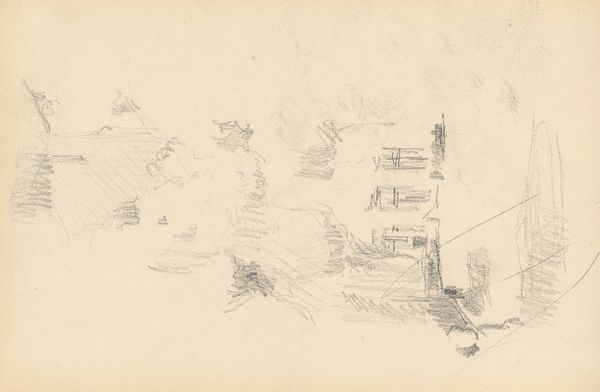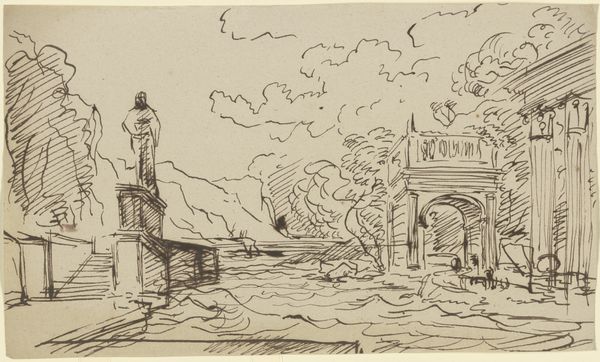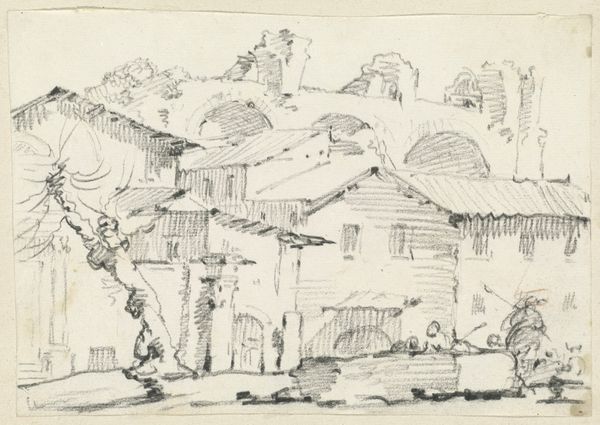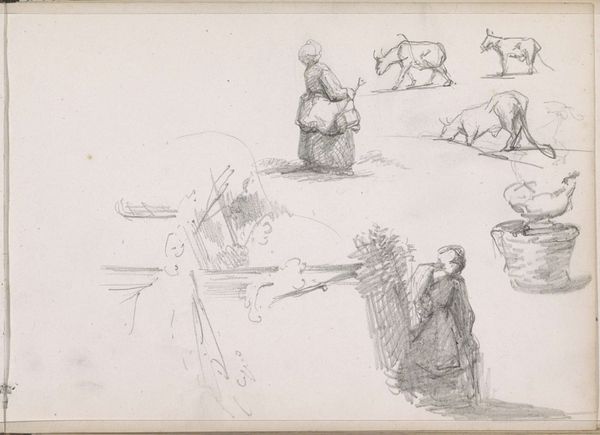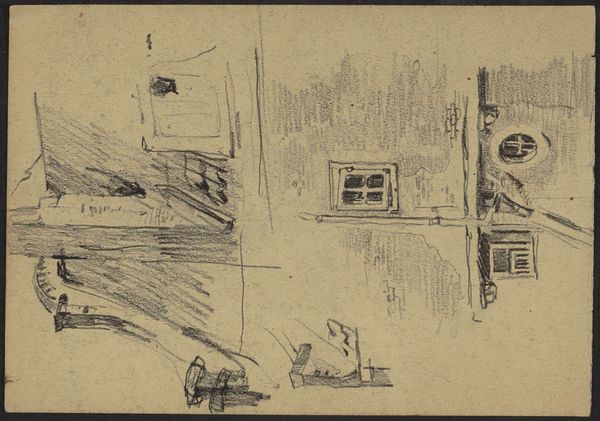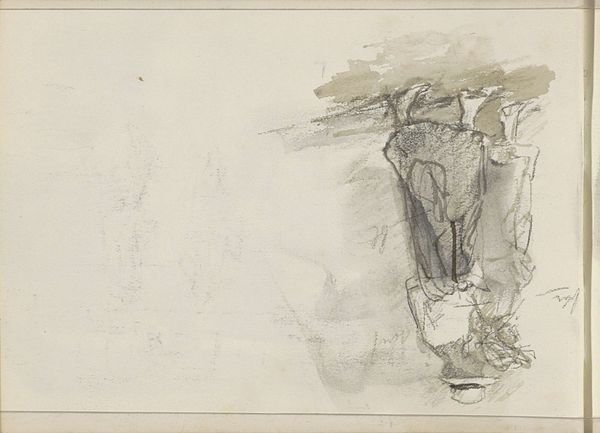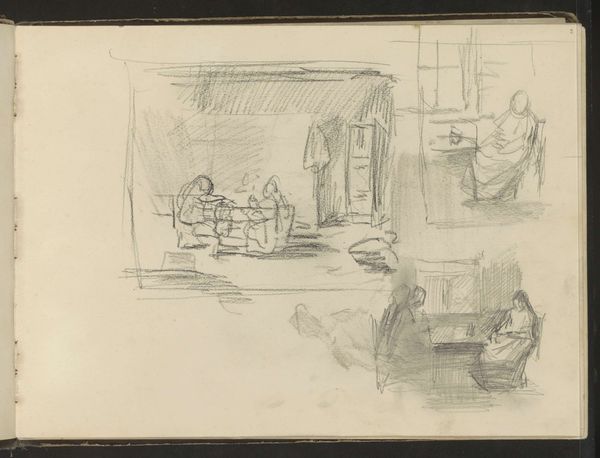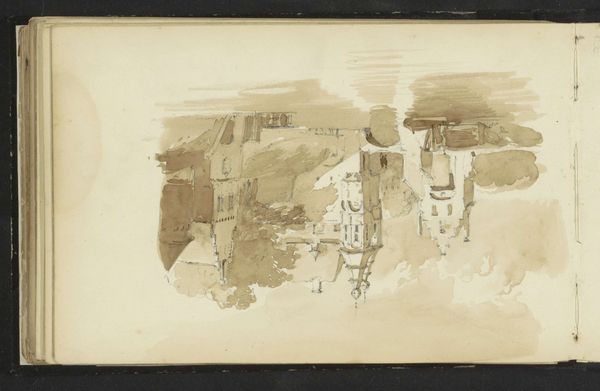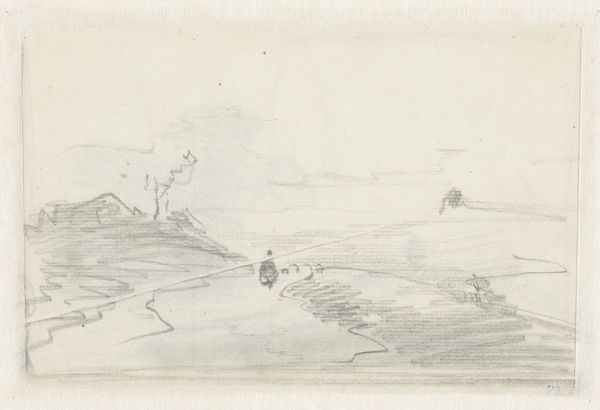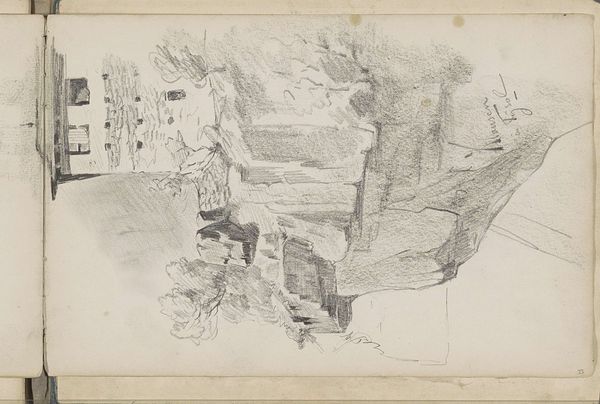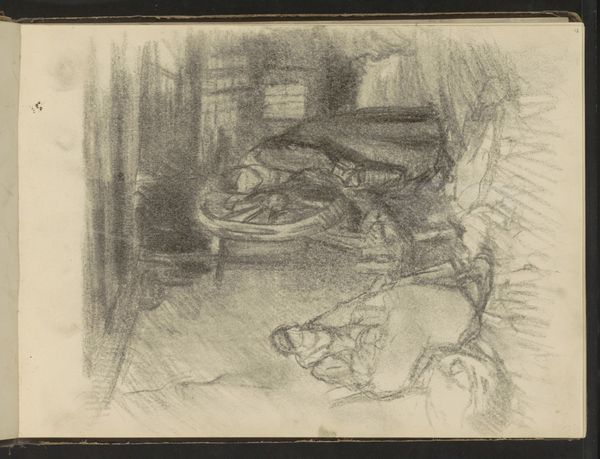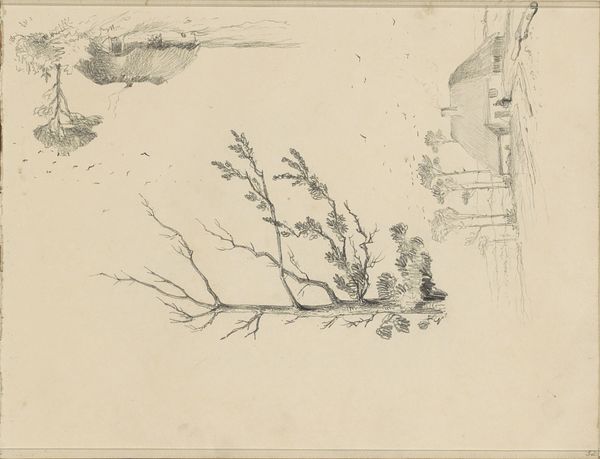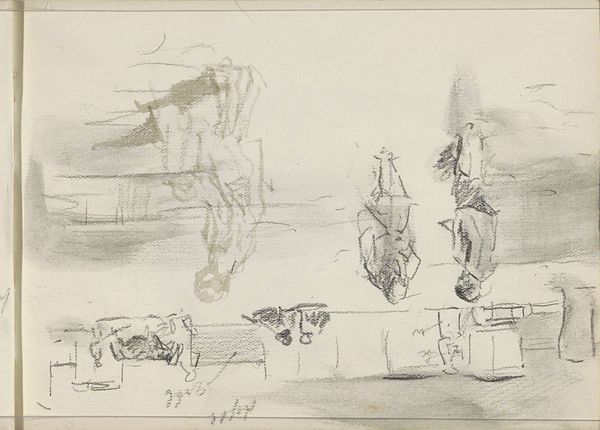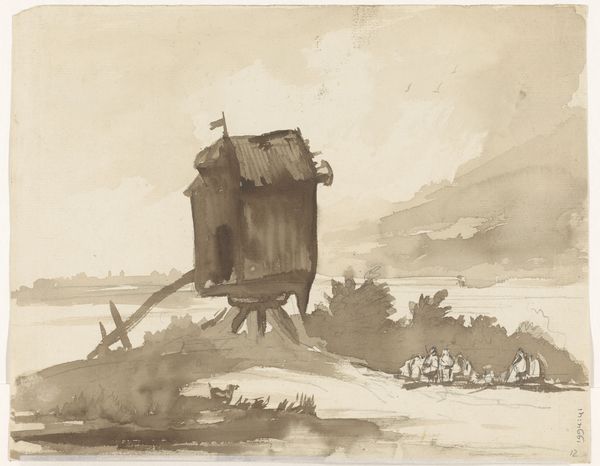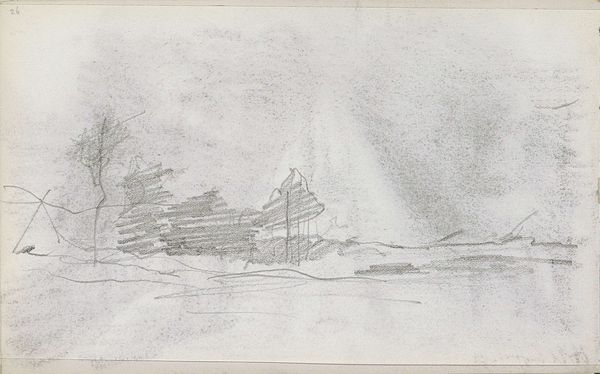
Studieblad, onder andere met een aangespoeld scheepswrak voor een kust 1830 - 1860
0:00
0:00
drawing, paper, pencil
#
drawing
#
pencil sketch
#
landscape
#
paper
#
romanticism
#
pencil
#
cityscape
#
realism
Copyright: Rijks Museum: Open Domain
Curator: Welcome. Before us is a drawing attributed to Albertus van Beest, entitled "Studieblad, onder andere met een aangespoeld scheepswrak voor een kust", which translates to "Study Sheet, including a beached shipwreck off a coast." It’s believed to have been created sometime between 1830 and 1860. Editor: My first impression is of incredible lightness and transience. The soft pencil lines seem to capture fleeting moments and scenes, as if reality itself is just a sketch. Curator: Indeed. Van Beest was working in a period of intense maritime interest, and of increased colonial exploration and settlement. There's a societal fascination with coastlines, trade routes, and the drama of shipwrecks – events that really did impact lives. This drawing serves almost as a document, echoing that socio-economic reality. Editor: I notice how the composition uses separate vignettes. Each one—a desert scene, an interior, and what looks like storm debris—are treated with the same level of care and observation. How does the relationship between them influence your reading? Curator: Well, to me, this feels almost like an ethnographic survey. We're seeing evidence of far-flung empires and a developing sense of both wonder and control through depiction. He's carefully studying types, poses, architectural details—information to be processed by the western gaze. Editor: But is that gaze not romanticised here? It is a "Study Sheet," so maybe we're viewing notes on subjects he finds personally interesting, composed by using a technique that blends precise details with haziness. A certain expressive vagueness adds to a romantic, contemplative atmosphere. Curator: True, the Romantic undertones are undeniable, perhaps betraying the limitations of colonial objectivity, of a certain bias of observation and interpretation. Editor: The way light is used is intriguing as well. Notice how highlights emphasize the ruin elements, a reminder of human vulnerability set against harsh environments. Curator: I agree. The composition does pull us into a narrative, though it's somewhat fragmented. Perhaps what's interesting isn't the single, cohesive "story," but the sum of the observations he records for us to decode as we will. Editor: I think that’s where its enduring fascination lies. The drawing style allows us to project our own feelings, or meanings into its open narrative, where all our experiences colour its ultimate meaning.
Comments
No comments
Be the first to comment and join the conversation on the ultimate creative platform.
